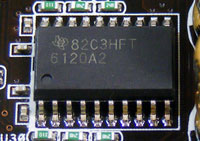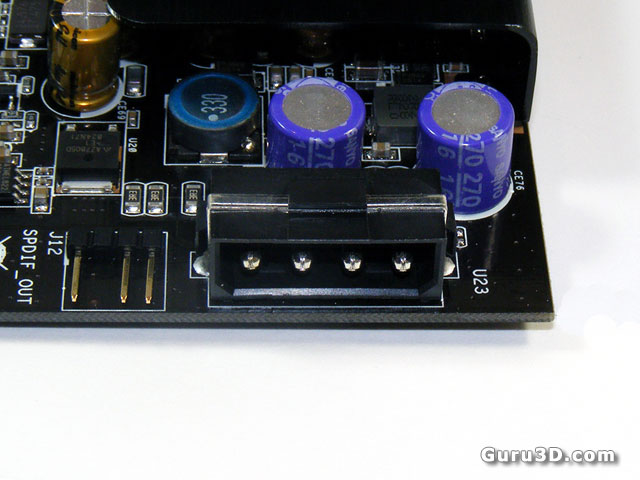Electronics Overview

The picture above better illustrates the opamp design and layout. We have the JRC2114s at the right hand side feeding the signal into the final buffer stage (LM4562) at the left. Between the JRC2114s and the LM4562 we have relays, when switching the card into headphone mode the relays change the output of the 2114D from the LM4562 to the (Hi-Z) Headphone amplifier chip offering more gain for your high end headphones.
 Hi-Z Amplifier
Hi-Z Amplifier
The high Impedance (Z) headphone amplifier used on this card is the Texas Instruments
TI6120A2 which provides better then 120dB dynamic range, a SNR of 120dB and a fast Slew Rate of 1300 V/µS add the fact that this amplifier circuit is swinging from -12 V to +12 volts and we have a serious high fidelity power source for demanding headphones.
The THD+n graph from the specification sheets show impressive results and this amplifier chip has very low distortion within the audio bandwidth.
Power and Grounding

The power supply for the amplifier sections of this soundcard come from the Molex connector on the soundcard. Using the Molex to supply these sections provides arguably cleaner power supply to these very sensitive circuits and helps with the over-all quality of the sound and operation of the circuitry.
This card also utilizes an exclusive design technique called Hyper-grounding which keeps signal and ground planes isolated and separate from each other again to add another rung up the ladder in achieving audio Nirvana
